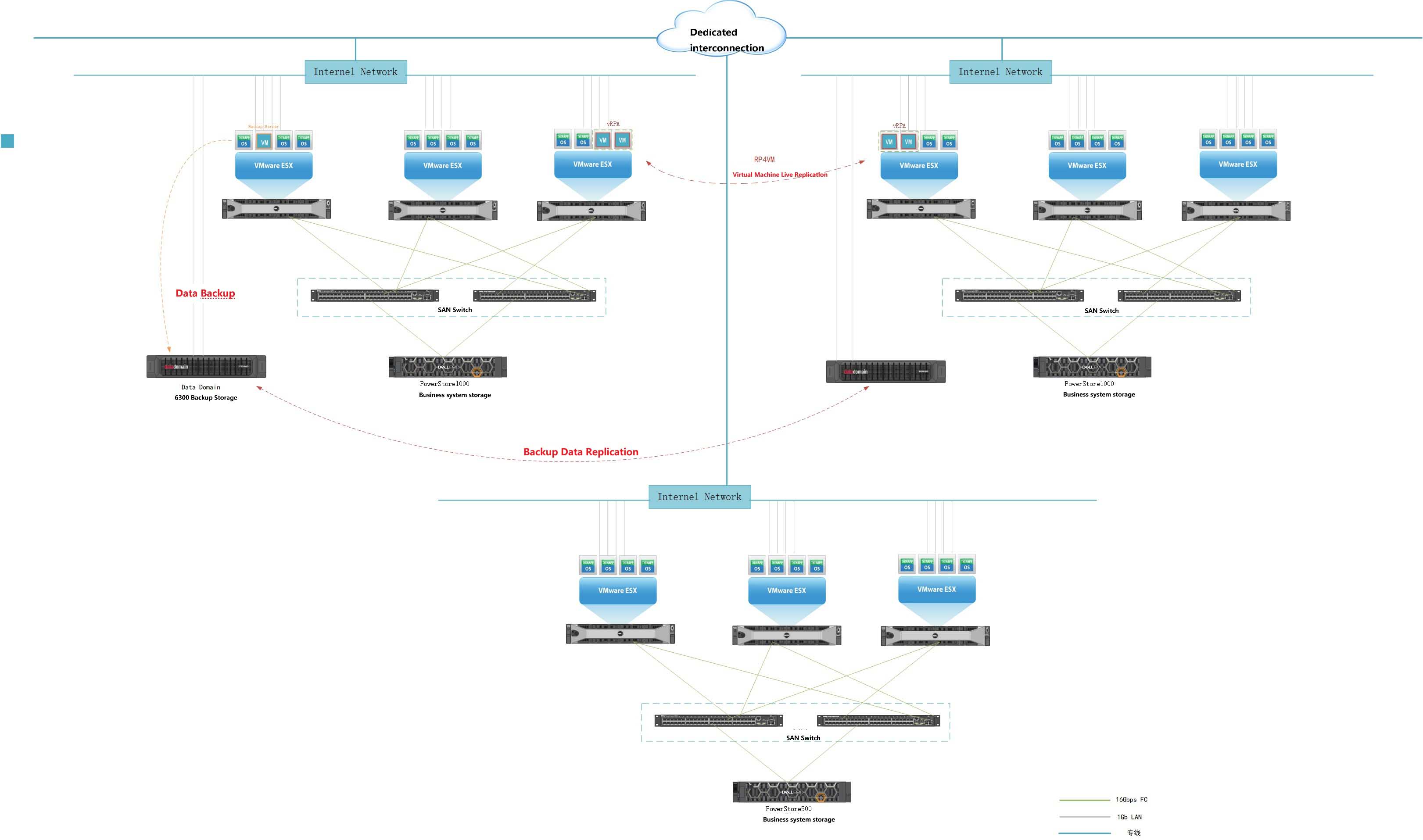Project Background
A medical technology company headquartered in Zhangjiang Hi-Tech Park, Shanghai, integrates R&D, manufacturing, and sales. Recognized as a High and New Technology Enterprise in Shanghai, it has established three R&D centers in both Puxi and Pudong. With strong in-house R&D capabilities, the company is committed to delivering cutting-edge medical solutions and high-quality products to clinicians and patients.

Solution Overview
To meet the growing demands of the business and ensure the security of core systems and data, the company decided to build independent private cloud platforms at each of its three R&D centers. Each center is equipped with a unified data storage system. Not only is core data backed up locally, but cross-site disaster recovery (DR) is also implemented among the three centers. This ensures service continuity and data protection even under extreme failure scenarios. The system design fully complies with the Information System Disaster Recovery Standards, providing strong technical support for the company's operations and growth.

Key Features
High Availability and Disaster Recovery Capability
- Utilizes HA (High Availability) and FT (Fault Tolerance) technologies on the virtualization platform to ensure system uptime during hardware failures.
- Professional-grade DR tools provide real-time cross-site data replication and rapid recovery for core production hosts, achieving minute-level failover (RTO ≤ 15 minutes) and near-zero data loss (RPO ≈ 0).
- Implements a “Two Locations, Three Centers” architecture where each of the three centers serves as backup for the others, fully meeting national DR standards and ensuring business continuity under extreme scenarios.
High Performance and Elastic Scalability
- Based on mainstream private cloud solutions, virtualization technology is used to optimize resource utilization and enhance computing, storage, and network performance.
- Supports online expansion and seamless upgrades, allowing flexible scaling of computing power, storage capacity, and bandwidth to accommodate 3–5 years of business growth.
Efficient Data Protection and Management
- Centralized, automated backup and recovery mechanisms combined with cross-data-center synchronization deliver redundant storage and real-time protection.
- Data deduplication reduces storage consumption, lowers operating costs, and provides an economical, efficient backup solution.
Compliance and Security
- System design fully aligns with the stringent data security and DR requirements of the medical industry (e.g., Information System Disaster Recovery Standards).
- Employs encryption and multi-layer access control mechanisms to safeguard core systems and sensitive data.
Customer Challenges
- Business Growth & Resource Bottlenecks: Traditional IT architectures have low resource utilization and cannot support growing multi-site demands; hardware costs are high.
- Data Security & DR Risks: Local-only backups lack cross-site DR capabilities, exposing the business to risk from regional disasters.
- Insufficient System Reliability: Legacy systems lack HA design, where hardware failure can lead to critical service downtime, affecting R&D and patient services.
- Strict Compliance Requirements: The healthcare industry demands robust data protection and DR; technical solutions must balance functionality and regulatory compliance.
- Complex Operations & Maintenance: Independent management of multiple data centers increases monitoring and O&M complexity; automation and unified tools are lacking.
Customer Benefits
- Ensured Business Continuity: With mutual backup across three data centers and minute-level failover, services remain uninterrupted even during disasters, enhancing customer trust and market competitiveness.
- Cost Optimization & Resource Efficiency: Virtualization boosts server utilization by 30%–50%, cutting hardware procurement and maintenance costs. Data deduplication reduces storage usage by 30%–50%, lowering overall storage expenses.
- Agile Business Support: Scalable architecture allows fast deployment of new business systems, shortening R&D cycles and accelerating time-to-market.
- Enhanced Compliance & Security: Standardized DR design and robust security mechanisms reduce legal risk and data breach potential, facilitating industry compliance certification.
- Improved O&M Efficiency & Stability: Unified monitoring and automation tools reduce manual intervention, cut management overhead, and enhance system stability and reliability.